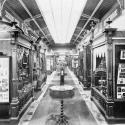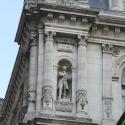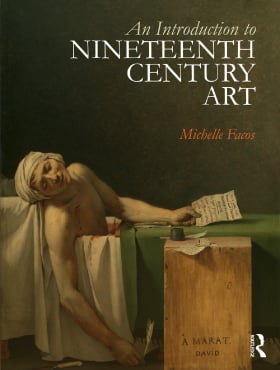Gernsheim, Helmut. The Origins of Photography. New York: Thames and Hudson, 1982
Chapter 8
PHOTOGRAPHY AS FACT AND FINE ART
With its ability to capture the details of the visible world with mechanical precision, photography encroached on territory occupied by drawing and painting. This encroachment intensified as chemical and optical improvements were made, and the process became easier, quicker, and more precise. At the same time, photographers were denigrated as mere mechanics by critics unaware of the aesthetic control exercised by photographers in the arrangement or selection of motifs and the development and printing processes. In their quest for acceptance as artists, some photographers imitated the subjects and compositions of paintings, while others purposefully avoided the clarity and exactitude for which photography was known. While photography's "scientific" character gave it singular authority when documenting architecture, landscape, and people, it also prompted artists to think about the special properties of traditional art processes.
Artists and Artworks:
Readings:
Gernsheim, Helmut. The Rise of Photography: 1850-1880, the Age of Collodion. London and New York: Thames and Hudson, 1988
Hamilton, Peter. The Beautiful and the Damned: the Creation of Identity in Nineteenth-Century Photography. Aldershot and Burlington, VT: Lund Humphries, 2001
Hannavy, John. Encyclopedia of Nineteenth-Century Photography. New York: Taylor and Francis Group, 2008
Hartmann, Sadakichi. The Valiant Knights of Daguerre: Selected Critical Essays on Photography and Profiles of Photographic Pioneers. Berkeley, CA: University of California Press, 1978
Marien, Mary W. Photography and Its Critics: A Cultural History, 1839-1900. Cambridge: Cambridge University Press, 1997
McCauley, Elizabeth Anne. A..A.E. Disdéri and the Carte de Visite Portrait Photograph. New Haven, CT: Yale University Press, 1985
Plantureux, Serge. Nièpce, Daguerre or Talbot?: the Quest of Joseph Hamel to Find the Real Inventor of Photography. Paris: CEROS, 2004
Weaver, Mike. British Photography in the Nineteenth Century: the Fine Art Tradition. Cambridge, UK and New York: Cambridge University Press, 1989
Documentation:
In 1843 Elizabeth Barrett Browning wrote about the invention of photography to her friend Mary Russell Mitford:
“’Do you know anything about that wonderful invention of the day, called the Daguerreotype? Think of a man sitting down in the sun and leaving his facsimilie in all its full completion of outline and shadow, steadfast on a plate, at the end of a minute and a half! The Mesmeric disembodiment of spirits strikes one as a degree less marvelous….It is not merely the likeness which is precious in such cases – but the association and the sense of nearness involved in the thing…the fact of thevery shadow of the person lying there fixed for ever! It is the very sanctification of portraits’.”
Cited in Mark Haworth-Booth, “The Daguerreotype: A New Wonder,” The Golden Age of British Photography 1839-1900 (London: Victoria and Albert Museum, 1984), 25.
Web Resources
Metmuseum: French photography pre-1860
Metmuseum: French photography post-1860



 Buy the Book
Buy the Book